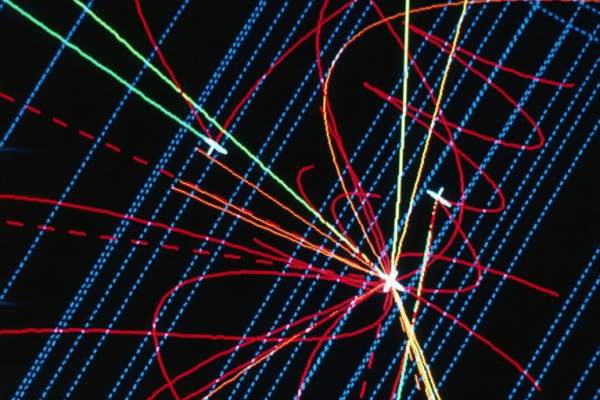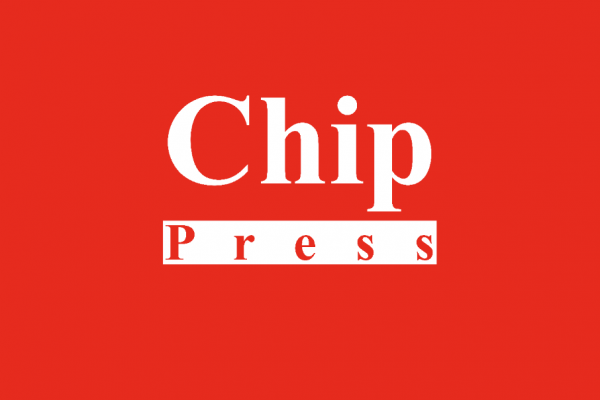Chip发表北京理工大学孙林锋团队综述论文:基于范德瓦尔斯材料的浮栅存储器用于神经形态计算
FUTURE远见| 2023-12-01
Future|远见
Future|远见future选编
近日,北京理工大学孙林锋团队以「Van der Waals materials-based floating gate memory for neuromorphic computing」¹为题在Chip上发表长篇综述论文,聚焦于范德瓦尔斯材料构筑的浮栅存储器,全面介绍了各种高性能浮栅存储器及其在神经形态计算中的广泛应用。第一作者为张倩玉,通讯作者为孙林锋。Chip是全球唯一聚焦芯片类研究的综合性国际期刊,是入选了国家高起点新刊计划的「三类高质量论文」期刊之一。
随着「大数据时代」的到来,各类信息数据的快速增长使得提高数据存储密度和计算速度成为当务之急。采用浮栅结构的闪存技术因其小型化、低功耗、数据存储可靠等特点而备受关注,并且其多值、可线性的突触可塑性可用于受人脑启发的神经形态计算。但是随着高密度存储需求不断发展,半导体技术节点不断缩小,传统硅基闪存技术出现了许多无法避免的问题²⁻⁴,如隧道氧化厚度减少导致电荷泄漏、浮栅体积缩小导致存储电荷减少,以及无法很好地解决短沟道效应等。而基于范德瓦尔斯材料的浮栅存储显示了其区别于传统材料的独特优势(表1)。特别是基于范德瓦尔斯材料的浮栅器件出现了许多新型结构⁵,性能上得到了进一步突破⁶(图1)。
表1|基于范德瓦尔斯材料的浮栅存储与传统材料浮栅存储的性能比较。
图1|浮栅存储器件的发展历史。
该综述全面介绍了范德瓦尔斯材料浮栅存储器的发展历史,工作原理和在神经形态计算中的应用。该综述根据浮栅器件结构的不同,将浮栅存储器分为了底栅/顶栅、双栅、半浮栅、两端浮栅、拓展浮栅这五种典型结构(图2),并对每种结构的特点做了详尽的分析。此外,根据写入/擦除信号类型分类,将浮栅存储器分为电调制、光调制和机械调制类型,并详细阐述了多信号协同调制在视觉识别、听觉识别和触觉识别等领域的应用,例如利用浮栅光电突触⁷完成基于视觉注意机制的多目标识别任务(图3),展示了基于范德瓦尔斯材料的浮栅存储器件在神经形态计算多功能应用中的巨大潜力。
图2|浮栅器件的典型结构。
图3|用于多目标识别的全范德瓦尔斯集成光电突触⁷。图片版权:Wiley-VCH Verlag。
最后,该综述提出了基于范德瓦尔斯材料的浮栅存储器件在现今面临的挑战,如寻找新的范德瓦尔斯材料,设计更为合理的器件结构,减小小型化过程中器件间的干扰,与现有半导体工艺兼容等问题。因此,进一步优化材料制备工艺、器件结构和加工工艺流程,将为设计和制造高性能、低功耗的范德瓦尔斯基浮栅存储器奠定基础。
Van der Waals materials-based floating gate memory for neuromorphic computing¹
With the advent of the 「Big Data Era」, improving data storage density and computation speed has become more and more urgent due to the rapid growth in all kinds of information data. Flash memory with a floating gate (FG) structure is attracting great attention owing to its advantages of miniaturization, low power consumption and reliable data storage. Furthermore, its multi-level and linear synaptic plasticity can be applied in brain-inspired computing. However, with the increasing of high-density storage demands and the further reduction of semiconductor technology nodes, many unavoidable problems have emerged for traditional silicon-based flash memory²⁻⁴, such as decreased tunneling oxide thickness leading to charge leakage, reduced FG volume leading to less storage charge, and short channel effects, which cannot be addressed well. While the FG memory based on van der Waals(vdW) materials shows its unique advantages differing from traditional materials (Table 1). Especially, FG devices based on vdW materials with numerous novel structures have been developed in recent⁵, achieving further breakthroughs in device performance⁶ (Fig. 1).
This review introduces the development history, working principle and applications of vdW material FG memory in neuromorphic computing comprehensively. In particular, according to the different device structures, the FG memory could be divided into five typical structures: back/top gate, dual-gate, semi-floating gate, two-terminal floating gate, and extended floating gate (Fig. 2). The characteristics of each structure are analyzed in detail. In addition, based on the classification of write/erase types, FG memory is categorized into electrical modulation, optical modulation, and mechanical modulation types. The paper elaborates on the applications of multi-signal cooperative modulation in the fields of visual recognition, auditory recognition, and tactile recognition. For example, the FG photoelectric synapse⁷ is used to complete the multi-target recognition task based on the visual attention mechanism (Fig. 3), which demonstrates the significant potential of vdW material-based FG memory devices in multifunctional applications for neuromorphic computing.
Finally, the review presents the challenges faced by vdW based FG memory, such as searching new vdW materials, designing more reasonable FG device structures, reducing the interference during miniaturization, and compatibility with existing semiconductor processes. Therefore, optimizing material preparation processes, device structures and processing techniques will establish the foundation for the design and fabrication of high-performance, low-power vdW materials based FG memory.
参考文献
1. Zhang, Q. et al. Van der Waals materials-based floating gate memory for neuromorphic computing. Chip 2, 100059 (2023).
2. Kingon, A. I., Maria, J.-P. & Streiffer, S. Alternative dielectrics to silicon dioxide for memory and logic devices. Nature 406, 1032-1038 (2000).
3. Hou, X., Chen, H., Zhang, Z., Wang, S. & Zhou, P. 2D atomic crystals: a promising solution for next‐generation data storage. Adv. Electron. Mater. 5, 1800944 (2019).
4. Wang, S., Liu, X. & Zhou, P. The road for 2D semiconductors in the silicon age. Adv. Mater. 34, 2106886 (2022).
5. Liu, C. et al. A semi-floating gate memory based on van der Waals heterostructures for quasi-non-volatile applications. Nat. Nanotechnol. 13, 404–410 (2018).
6. Wu, L. et al. Atomically sharp interface enabled ultrahigh-speed non-volatile memory devices. Nat. Nanotechnol. 16, 882–887 (2021).
7. Chen, Y. et al. All two-dimensional integration-type optoelectronic synapse mimicking visual attention mechanism for multi-target recognition. Adv. Funct. Mater. 33, 2209781 (2022).
论文链接:
https://www.sciencedirect.com/science/article/pii/S2709472323000229
作者简介
张倩玉,北京理工大学物理学院2023级博士研究生在读,主要研究方向为基于量子功能材料/异质结的器件设计、微纳加工及其在类脑计算方面的应用。
孙林锋,北京理工大学物理学院教授、博士生导师,国家重点研发计划首席青年科学家,国家级高层次青年人才,北京理工大学徐特立青年学者。近年来长期从事基于量子功能材料的物态调控与器件物理,及其在存算/感存算一体上的应用, 并取得一系列创新性研究成果。迄今以第一/通讯作者在Sci. Adv., Nat. Commun., Phys. Rev. Lett., Adv. Mater., Nano Lett.等期刊上发表多项创新性研究成果和多篇邀稿综述,总被引超过3700次。并担任Nat. Mater., Nat. Commun.,Sci. Adv., Adv. Mater.等期刊审稿人。主持国家重点研发计划青年项目,国家自然科学基金青年项目等。
关于Chip
Chip(ISSN:2772-2724,CN:31-2189/O4)是全球唯一聚焦芯片类研究的综合性国际期刊,已入选由中国科协、教育部、科技部、中科院等单位联合实施的「中国科技期刊卓越行动计划高起点新刊项目」,为科技部鼓励发表「三类高质量论文」期刊之一。
Chip期刊由上海交通大学出版,联合Elsevier集团全球发行,并与多家国内外知名学术组织展开合作,为学术会议提供高质量交流平台。
Chip秉承创刊理念: All About Chip,聚焦芯片,兼容并包,旨在发表与芯片相关的各科研领域尖端突破性成果,助力未来芯片科技发展。迄今为止,Chip已在其编委会汇集了来自14个国家的70名世界知名专家学者,其中包括多名中外院士及IEEE、ACM、Optica等知名国际学会终身会士(Fellow)。
Chip第二卷第四期将于2023年12月在爱思维尔Chip官网以金色开放获取形式(Gold Open Access)发布,欢迎访问阅读本期最新文章。
爱思唯尔Chip官网:
https://www.sciencedirect.com/journal/chip




